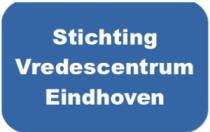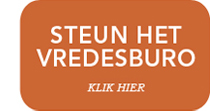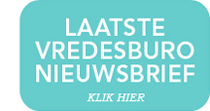Content:
3. Who am I? A peek into being bicultural (May 30, 2018)
2. Municipal Elections 21 March 2018 (14-3-2018)
1. First Blog: Looking at Dutch society (18-11-2017)
3. Who am I? A peek into being bicultural May 30, 2018 (30-5-2018)
If your brain feels like it’s gotta do some extra complicated thinking when posed with the question “Where are you from?”, then you probably have a story like mine (or a more interesting one). Check my passport and you would realize I am Austrian but then again people ask “Where are you ACTUALLY from?” and then you look at me (or a photo of me) and you think, “but she doesn’t look like a typical Austrian”. Well no shit Sherlock! Anyone who has relatively good vision can say that I look Indian and not Austrian. Well let me tell you, I am actually neither. But then where are you from Limi? I don’t know ..or wait I am bicultural.
These days, where we all move around from city to city and country to country and continent to continent and planet to planet (okay maybe not the last one, quite yet), an identity crisis like mine is quite natural. Now how do we feel about it? Are we happy being in the midst of 2 (or more) identities or do we feel lost? Do we feel at home everywhere or nowhere? People who take part in two cultures in varying degrees are known to be bicultural.
The following poem shows how it is to be born into two cultures. Initially you may be weirded out and lost but once you embrace your biculturalism, you will realize how lovely it is. The rest of the poem is left to your interpretation.
Who am I?
Jingles and bingles as the girl sprout arrives
Cherries and blossoms for the new one alive
Twists and turns and rock and roll
Yet little told to the new soul.
Harps and drums slowly tread home
For another tot was to be born
Iffy it was, for little was known-
Known to me, as the newborn.
Lot to ask and lot to say
Queries and worries haunt me all day
Who am I? Two ways lay
For raised I was in both ways.
Days of merry and joy do come today
Whines and cries far far away
For lovely it is born this way.
-Limi Kalapurackal
Now to elaborate: being bicultural has certain advantages and disadvantages that come with it.
It is quite obvious that bicultural people will have a larger social network and can in fact also sometimes act as the bridge between two cultures. Another advantage of being bicultural is (in most cases) being bilingual (or multilingual). At home we tend to speak the mother tongue of our parents and as we move out we catch up with the language of the outside world. In my case, I am trilingual- I was raised learning 3 languages, English, German and Malayalam.
However, the same argument can be used to say that we are doubtful of what our mother tongue is. Is it all three? Well, I don’t speak German as good as someone who is Austrian and my knowledge of Malayalam isn’t as profound as that of my cousins living in India. That leaves me with English, but then again is my English comparable to that of an English or American person? This unclear situation may confuse one and lead them into more and more questions. It could also be that learning multiple languages simultaneously at a young age may result in none of them developing well enough which once again is a concern then. So it really depends on the individual and those who raise him/her, as to how fluent one is in the two (or more) languages.
Doing some reading about biculturalism, I realized that one of the major problems that may arise from being bicultural is the loss of identity. Personally, I have also felt this myself when I have to introduce myself to someone. Do I say I am from Austria or do I say I am from India? Or why not both but then would they think I am half Austrian and half Indian? Or should I say I am from India but I was born and raised in Austria or should I say I am from Austria but my parents are from India (oh wait my mom holds an Austrian passport though, there we go with another cycle of thoughts..). Now this definitely sounds like a mess of thoughts when the simple question is posed “Where are you from?”. For me personally I embrace this mess. I love being the special one in the crowd who is not the average unicultural person. I feel special. But this does not necessarily have to be the case for all. It is easy to give in to the mental mess and to be wishing to be one of the average ones in the crowd. This is specially the case when you have to make decisions in terms of dressing, relationships, social life and so on.
I went to school in India from grade six to grade eleven and India, having a culture of arranged marriages, does not look up to youngsters having a boyfriend/girlfriend. I was surrounded by friends who had to keep their relationships a secret and who lived with the fear of any adult finding out. Then I moved back to Europe where not having a boyfriend/girlfriend was considered “strange”. With such contrary cultures, anyone would be confused when making a decision for oneself. I rather took advantage of this and comforted myself by comparing myself to either culture. “Oh I am single but hey having a boyfriend is bad (Indian mentality) or heyy I wanna date X and yeah that is perfectly normal (Western culture)”.
In other words, I define my own morals or my own style of living. At times when I feel like I am being pulled apart by both cultures, I take a step back and ask myself what I want and do accordingly. I urge all bicultural people to do so. Take advantage of what you have been given, mix up both cultures and mix in your own set of morals. Instead of being ripped apart by two ends, pull them both towards each other and make a lovely mixture out of them.
In the little village that my parents are from in India, I would not dare to wear anything that is shorter than knee-length. This was initially difficult for me to accept when I moved to India, especially since the weather in India is not ideal for wearing long pants, but I had to get used to it. On the other hand, living in Europe now, I start wearing short stuff once the temperatures rise above 20 degrees. Now both have their own reasons for why they have their set of cultural “rules”. However, the struggle was big when I had to convince my parents in Austria that it was normal to wear shorts when it was 24 degrees Celsius. Having grown up in India this was new to them and took a while for them to accept. Now, initially this pissed me off because all my Western friends were allowed to wear whatever they wanted to but I couldn’t. Luckily my parents were not stubborn for too long and understood that it was fine to wear whatever I wanted to. However, this may not always be the case and strong disputes may arise between both parties due to cultural differences. In such cases, it is of utmost importance for both the child and the parent to try to understand the other party and make compromises.
Another illustration of cultural differences is when you consider skin tone preferences. In India, the fairer you are the prettier you are. Fairness creams, soaps, scrubs etc are a big industry in the Indian markets. People try all that they can to get fairer. Fun fact, there is even a fairness cream brand called ‘Fair and Lovely’. Now this sounds ridiculous to a person from the West who is lying hours in the sun to get tanned in the Summer. For a person like me who hears both sides, all I can do is laugh out loud.
So to summarise, being bicultural is a precious gem to keep. Use it wisely to blend together the cultures you root from and soon you will realise that you stand out in the crowd.
2. Municipal Elections March 14, 2018 (14-3-2018)
“EU citizen or >5 years in the Netherlands? Then you’re allowed to vote!” Being an expat in the city of Eindhoven, this caption caught my attention as I saw the upcoming event about the Eindhoven municipal elections on social media. “Wait,” I said, “This means that I too get a say. Huraayy!” I decided to attend the event, ‘Eindhoven elections: Your vote counts!’ held at the TU/e. At this event, local party leaders were present to discuss popular topics and present themselves (mainly) to the English-speaking community of Eindhoven. Why is it necessary to let the non-Dutch residents of Eindhoven also cast their vote?
Approximately 30% or more of Eindhovens population comprises of foreigners, and being such a major fraction of the city’s population, it is definitely important to hear our voices too. The law makes it quite clear that the government is open to the ideas and wishes of the expats as well. In a city like Eindhoven, where the multicultural environment is growing every day, this is of utmost importance. However, there are points of failure where the municipality disappointed me in their openness to addressing the expats and especially in this heated season of the elections. One major example is how the letters with the voting ballots were all in Dutch. Being an expat who is already unaware of the fact that he/she can even vote and then receiving such a “weird” letter, some of my friends just threw it away. If the local parties were so keen on addressing the wishes of the foreigners in Eindhoven, this could have been avoided. This point was presented by one of the members in the audience to the local politicians at the event, and they accepted that this was not a right move. However, they also asked if there is nothing like a translator buddy or so who could translate these letters for us. But then again why not just add a few lines in English too for the expats if you are actually interested in their stances?
Something that caught my attention at the event was the non-Dutch accent of one of the representatives of the parties as she spoke English. Miriam Frosi, a candidate from the CDA party for the municipal elections is actually Italian! This seemed really interesting to me and later at the bar she told me the story of how she got into the politics of a different country and how she is surviving in it today. My point with this, is to show how open certain parties are to accepting foreigners and having them involved in the decision-making system of Eindhoven. Note that I said certain parties. This is because one of the major downfalls of the event was that there were majorly only left-wing parties present. This meant that there was a lack of strong disagreement and much opposition to one anothers claims. All the parties had English flyers and their captions were even more warming. Here are a couple of examples:
CDA: “…everyone can feel at home!”
VVD: “For a future-proof Eindhoven”
GroenLinks: “Change starts here”.
As an expat in Eindhoven, it was great listening to the candidates and future leaders of Eindhoven about whom I had the least knowledge. The unexpected right to vote that I hold along with the discussion with the local politicians made me feel relatively less like I am in a foreign country. However, it is important to note that my views are currently mainly shaped by this one event which was made for expats and to call for their votes. Hence, it was quite obviously shaped to make sure that the foreigners feel at home! Anyway, let the 21st of March decide.
- First Blog: Looking at Dutch society November 18, 2018 (18-11-2017)
The first time I placed my foot on the soil of the Netherlands was on August 17th 2017 in the Southern city of Eindhoven. It was a calm night with comfortable weather and the first most striking thing to me was the large amount of greenery that surrounded the bus station. Before talking to the host of my housing, I was planning to call an Uber to get from the bus station to my new home. However, now I realize how small Eindhoven actually is which makes it much easier to get from point A to point B in no time. Thanks to the biking culture of the country I only had to use the bus once within these 3 months of my stay in the city. Biking definitely is one of the most positively strange thing about the country. Among the 2 groups of expats- 1 who love biking and the other who hate it, I definitely belong to the former. Not only is it a very healthy way to transport oneself but it also reduces pollution and traffic and other negative consequences of cars. However, it must be added that the weather is not always suitable for biking and on some days I do wish this city had metros and trams (or maybe rickshaws like in India). If you ever visit the Netherlands, the one thing you must carry with you is a raincoat, and a good one! The weather fluctuates so many times within the day that it is almost impossible for any weather forecaster to predict it. The weather definitely is the relatively more painful aspect of living in this country.
Coming to the Dutch people, the best thing about them is that a majority of them speak fluent English. This on one hand makes it easier for a foreigner to communicate with the Dutch but on the other hand it could also be that due to their high proficiency in English one might not feel pressured to study Dutch. The Dutch are also said to be very straightforward and although this may seem quite abnormal to some cultures, so far it hasn’t been a pain to me. However, they are very kind and helpful people I must say.
One thing I find very strange in the Netherlands is the opening times of stores and cafes. On weekdays a majority of them close by 6 pm (except for Fridays when they are open till approximately 9 pm) and this is quite unusual for me and many other expats. Mondays stores in the city center open at 1 pm (some at 11 am) and this is very unusual to the much earlier opening times that I am used to. However, one good thing about the opening times is that stores are also open on Sundays so Sundays can also be shopping days.
Within my 3 months stay, I tried different Dutch food delicacies as well. Stroopwafels among them are one of the most popular worldwide . It is a delicious chewy cookie that can roughly be translated to syrup waffle. I first tried the supermarket ones but I must say the fresh ones are much better! The Dutch seem to be very proud of their Appeltaart or apple pie but I honestly don’t see much speciality in them. Small, fluffy pancakes or poffertjes is another Dutch sweet dish that are also part of national festivals and I quite enjoyed these. Another Dutch sweet I tried is the Tompoes, which is a traditional Dutch pastry that is commonly served with coffee and although it is quite calorie rich, I’d recommend it. I should not forget the huge amount of cheese and sandwiches the Dutch consume. This may be a big shock to many who previously did not eat many sandwiches. It was told to me that the Dutch eat sandwiches for breakfast and lunch and pancakes for dinner. Sounds quite odd right? I must not forget how much the Dutch love their Kapsalon. It is a very heavy meal composed of layers of cheese, fries, salad, various sauces and shawarma meat. Although I personally didn’t enjoy it, it is a very loved meal by the majority of Dutch.
To sum it all up, my favourite part of the Dutch culture is its biking. Biking down the narrow lanes and canals is a great experiences and a very refreshing one. For photography lovers, I’d highly recommend visiting the country since it has some great spots for photography! Although the Dutch weather might be a pain sometimes, going for a walk through the small towns in the Netherlands is indeed worth it!






